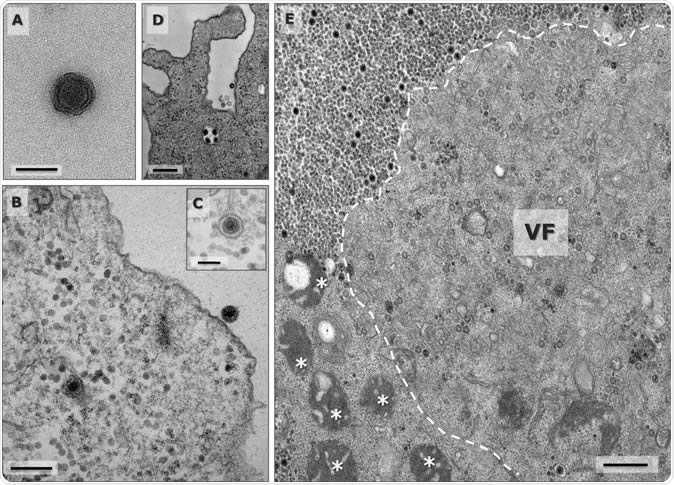A team of Brazilian scientists discovered a puzzling new virus made of genetic material never seen before. But the virus won’t pose a serious health threat to humanity since it seems to only hunt amoebas.
The team of researchers spotted an aquatic virus while assessing a giant virus that has infected an artificial lake. The puzzling and mysterious virus collected from amoebae was much smaller than the viruses that usually infect amoeba. This discovery was made in Lake Pampulha in Belo Horizonte, Brazil’s Minas Gerais state.
A few years ago, the scientists collected water samples from Lake Pampulha creek, which is an artificial lagoon in Belo Horizonte. Back at the laboratory to study in their search for giant viruses, they discovered these small viruses that attack amoeba, a single-celled organism.
Never-seen-before genetic makeup
When the scientists analyzed the genome of the new virus, they found that more than 90 percent of its genes had never been seen before. The virus, officially named the Yaravirus, after Yara, which means “mother of waters,” is described in the online journal bioRxiv.
Some of the small virus’s genes, however, are similar to those in a giant virus, but it’s still unclear if these two viruses are related. The team is now investigating the various features of the novel virus and how it affects the ecosystem.
Further, the existence of the virus baffled the scientists since it has unique genomic features 80 nm-sized particles, which are very distinguishable from the giant amoeba virus.
The study sheds new light on how complex viruses are, and how vital virus research is.
For instance, the coronavirus is an animal virus but has jumped to humans, infecting more than 43,000 people and killing more than 1,000. Exploring the characteristics of viruses and their potential to affect humans or animals is crucial to learn more about them, how they reproduce, spread, or behave.
“Contrary to what is observed in other isolated viruses of amoeba, Yaravirus is not represented by a large/giant particle and a complex genome, but at the same time carries an important number of previously undescribed genes, including one encoding a novel major capsid protein. Metagenomic approaches also testified for the rarity of Yaravirus in the environment.,” the team wrote on the paper.

Yaravirus particle and the beginning of the viral cycle. A Negative staining of an isolated Yaravirus virion. Scale bar 100nm. b Transmission electron microscopy (TEM) representing the beginning of the viral cycle, in which one particle is associated to the host cell membrane and the second one was already incorporated by the amoeba inside an endocytic vesicle. Scale bar 200nm. c Detailed image of an incorporated Yaravirus particle in the interior of an endocytic vesicle. Scale bar 100nm. d Viral uptake by the amoeba may occur individually but also in groups of particles, as observed in the micrograph. Scale bar 250nm. e The viral factory completely develops occupying the nuclear region and recruiting mitochondria around it. Two different regions can be distinct: an electron-lucent region where the virions are assembled as empty shells and a second region formed by several electron-dense points where the genome is packaged inside the particles. Scale bar 500nm.
More complex than previously thought
To study the small viruses, the team isolated viral particles from tissue samples from humans and other animals. They confirmed that the DNA was from viruses by looking for a gene that codes the virus’s shell. However, the gene sequences are unrecognizable, making the virus unique and bizarre.
Yaravirus can’t infect humans, but the possibility isn’t totally removed. Though it infects amoebas, in case it jumps to humans, it would not cause a harmful threat to human lives. Nevertheless, Yaravirus’s discovery can be attributed to addition to human knowledge and can pave the way for more studies on small viruses and their role in the ecosystem.
A virus can synthesize proteins and replicate DNA, and there are various mechanisms in how they infect hosts. With this discovery, more knowledge is added to understand viruses further.
Journal reference:
A mysterious 80 nm amoeba virus with a near-complete “ORFan genome” challenges the classification of DNA viruses Paulo V. M. Boratto, Graziele P. Oliveira, Talita B. Machado, Ana Cláudia S. P. Andrade, Jean-Pierre Baudoin, Thomas Klose, Frederik Schulz, Saïd Azza, Philippe Decloquement, Eric Chabrière, Philippe Colson, Anthony Levasseur, Bernard La Scola, Jônatas S. Abrahão bioRxiv 2020.01.28.923185; doi: https://doi.org/10.1101/2020.01.28.923185